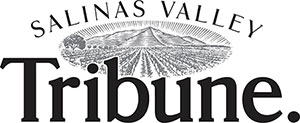Photo by Scheid Vineyards
Last weekend Scheid Vineyards celebrated its first pick of the season, Pinot grapes for its Isabelle Sparkling Wine.
MONTEREY COUNTY — Monterey County Vintners and Growers Association (MCVGA) has announced the beginning of the 2018 wine grape harvest in Monterey Wine Country.
The season launched last week with Caraccioli Cellars’ hand harvest of Pinot Noir from Escolle Vineyard in the northern Santa Lucia Highlands AVA. These grapes will be used to make Caraccioli Cellars world-renown sparkling wines.
The cool and moderate weather has provided Monterey County a very positive outlook for 2018 and made harvest more aligned with the typical Monterey coastal winegrowing timeline, several weeks later than the 2016 and 2017 harvests.
The bulk of the harvest will begin in September and continue actively through late October.
Bubbles first
Grapes for sparkling wines are harvested early to ensure high acidity with low sugar levels, ideal characteristics for sparkling wine production.
“The most difficult part of harvesting grapes for sparkling wines is pulling the fruit at precisely the right time as they are maturing quickly, and a day can make quite the difference,” shared Scott Caraccioli of Caraccioli Cellars. “The delicate balance and specificity of chemistry and phenolic flavor profiles matter tremendously in bubbles. We haven’t irrigated most of our vineyard this year. This contributed to a smaller berry size that will result in highly expressive wines.”
Back to normal
“This is the first year since 2012 we’re experiencing a return to normal cool coastal California climate with a long, drawn-out harvest season,” shared Ian Brand, winemaker, and owner of I. Brand and Family Wines.
Winemakers are actively involved in all processes of growing, including the harvest. Brand has been on the road daily evaluating grapes he will use in making wines.
“The crop load looks average to slightly light. Berry size is small, and as a winemaker, this is a good predictor for quality wine. This year is shaping up to be really good,” he said.
Caraccioli added, “The fruit set period in early spring was longer than normal, which led to many sleepless nights for growers. But despite the angst, we had a great set. We’re still running on a similar prolonged time cycle with harvest, producing optimal hang time with solid acids and great phenolic development. We’re excited about the 2018 harvest.”
“Although people have talked about being behind, I think we are returning to normal after several years of being early,” reaffirmed Jason Smith, president of Valley Farm Management and Smith Family Wines of Soledad. “After a long bloom period and what looked like a possible light crop we had decent set weather, and I think we are closer to normal. It is variable by variety and region. Pinot Grigio and Pinot Noir will be the first varieties we will start harvesting in mid-September — again more normal based on traditional harvests.”
Harvest timing decisions
The timing of harvest is one of the most critical decisions in the winemaking process. Growers have been sampling grapes for several weeks now and will continue more frequently as harvest gets closer.
The first visual sign that grapes are entering their final stage of ripening is veraison, the change of skin color. Red wine grape skins change from green to red and white grape skins become more translucent.
Jeff Pomo, vineyard director at Constellation Brands of Soledad, reports, “Our Pinot Noir has gone through almost 100 percent veraison and Chardonnay is about 75 percent done. Harvest is about seven to 10 days behind last year, so we’ll probably begin harvesting around the first of September.”
In addition to watching veraison, growers monitor the skin firmness, vine appearance, seed color and taste and flavor. Wine growing is a dance with nature, so growers continuously follow current and expected weather conditions.
Brix, the measurement of sugar in grapes, is the primary quantitative indicator of grape ripeness. Brix levels for harvesting sparkling wines is between 18 and 21 and anywhere between 21 and 25 for still wines.
“Brix accumulation is going nicely, we have some Pinot Noir in the upper teens,” shared Greg Gonzalez, vineyard manager for Scheid Vineyards of Greenfield. “Grapes for sparkling will likely be ready at some point next week. The temperatures have been favorable for a gradual ripening. I don’t think the Pinot Noir, Sauvignon Blanc and Chardonnay harvests will be in full flow until the first weeks of September. From now until then it will likely be small lots.”
Harvest timing is variable based on varietal, region or AVA and vineyards — and can even vary within a vineyard.
“The Pinot Blanc in a Chalone AVA vineyard was nearing 20 Brix, while the Syrah was only 50 percent through veraison,” Brand shared after a recent visit to the Chalone AVA. This variance is demonstrative of the many micro-climates of Monterey Wine Country.
In general, the northernmost AVAs harvest first. Santa Lucia Highlands (SLH) in the northern Santa Lucia Mountain range on the west side of the Salinas Valley and the Chalone AVA on the Gabilan Mountain range near the Pinnacles National Park on the east side of the Valley will be the first AVAs to start harvesting.
“The season is setting up nicely for a great balanced harvest,” concluded Gonzalez.














